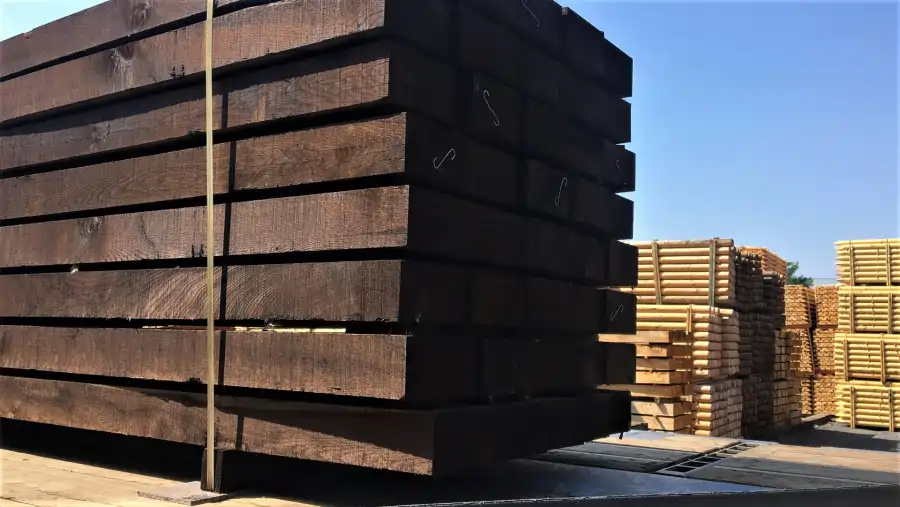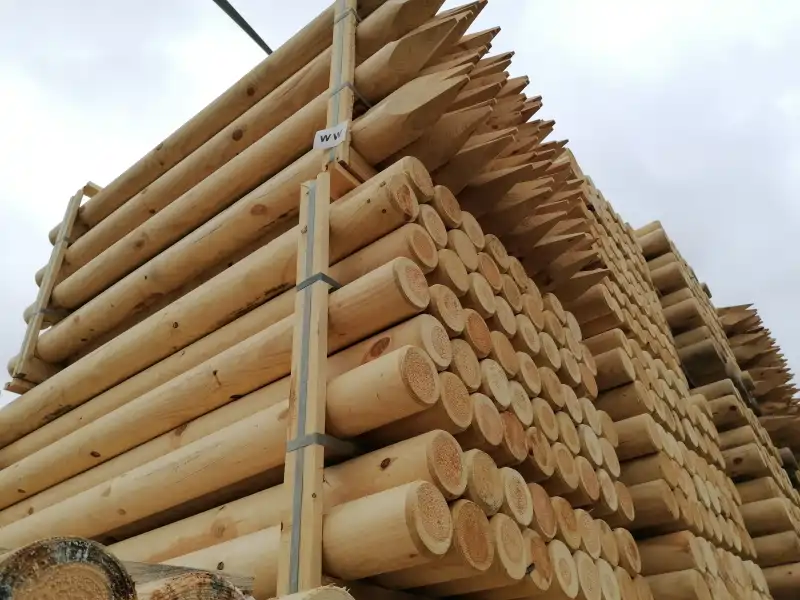Our native conifers do not produce naturally long-lasting wood.
Twenty years ago one could bank on a lifespan of 2-3 years for untreated timber. Since the major health crisis involving bark beetle (lps typographe) infestations, which began around 2020 in our Western European lands, as well as due to climate warming, we have unfortunately witnessed a major decline in the quality of the wood, even of healthy trees. Consequently, the expected lifespan has further decreased.
To increase its longevity, our dry wood (dried naturally or in industrial driers) is impregnated in autoclaves under pressure.
An autoclave is an air-tight cylinder in which round or sawn wood is placed for a variable cycle, depending on the state and species of wood to impregnate as well as the sought-after result.
The alternation of a vacuum and pressure is used to inject the preservative product into the wood to fill some of the cells. This protects the timber against fungi, mould and insect attack.
The bulk of the trees still found in our Ardennes coniferous forests are Norway spruce (Picea abies). Historically, this species was the best adapted to our elevations, where it found optimal conditions for growth. It did less well, for example, in the Condroz and Hesbaye regions, which is another reason why the Ardennes Plateau became woodland whereas the first two were converted into farmland.
Foresters have been eyeing other species for the past twenty years, but the Norway spruce and Douglas fir remain the main species in the area. Unfortunately, both are refractory to impregnation, unlike pine, which soaks up the product like a sponge.


